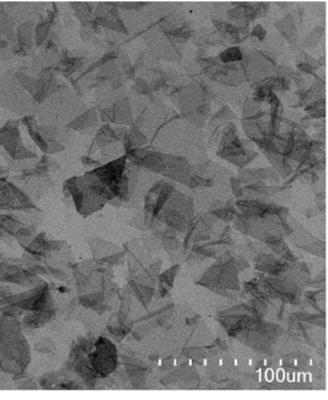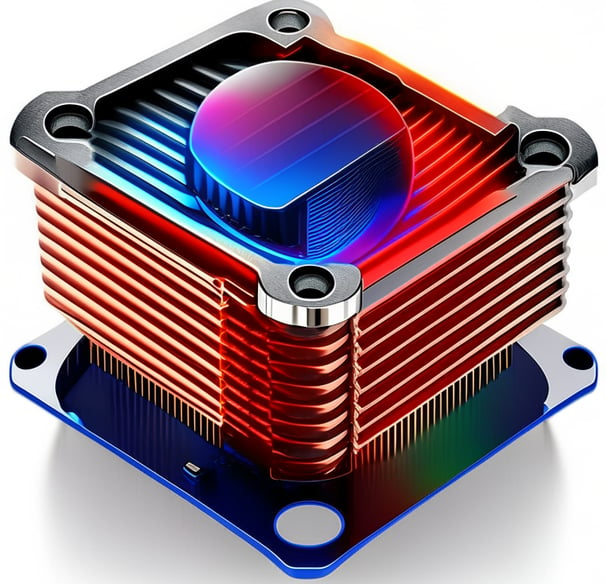Nanoscale Silica-Based Insulation Material Technology
Heat transfer occurs through the conduction of the solid framework and the gaseous phase, as well as through thermal radiation.
Nanopores reduce the impact of thermal convection and restrict the movement of gas molecules, reducing gas heat conduction efficiency. The nanostructure design extends the heat conduction path and limits the mean free path of the sound wave. The combination of these two characteristics effectively reduces the heat transfer capacity of the solid.






It is an advanced insulation material characterized by high porosity, high specific surface area, lightweight, and low thermal conductivity. Additionally, it can be combined with other organic materials to create a variety of application products, effectively reducing heat loss and improving energy efficiency.
The thermal resistance of nanoscale silica-based insulation materials is derived from their unique microstructure, which includes preventing thermal convection, reducing thermal radiation, and minimizing thermal conduction.
Most of the nanopores have sizes smaller than the mean free path of air, which is 67 nm. This prevents air from crossing the structure surface and effectively weakens the impact of thermal convection by restricting the free movement of air molecules within the pores, thereby significantly reducing the occurrence of thermal convection. Simultaneously, the nanopore size limits the range of gas molecule activity. Within these nanopores, the collision frequency of gas molecules is significantly higher than in a macroscopic space, resulting in a shortened mean free path of gas molecules and effectively reducing their thermal conduction capacity. Therefore, nanopores are one of the key elements in achieving high-efficiency insulation and thermal retention.
In other words, the insulation principle of nanoscale silica-based materials involves the very fine contact between solid particles. When heat is conducted through the solid, the conduction path is limited, thus achieving insulation. For gas thermal conduction, the pore size being smaller than the mean free path of molecular collisions suppresses gas thermal conduction. Even when conduction occurs along the walls of the nanopores, these walls extend indefinitely, creating an infinitely long path phenomenon. Additionally, the silica-based material of the nanopores itself has considerable resistance to radiative heat transfer, primarily due to its low material proportion and extremely high surface area.
Compared to traditional insulation materials, the insulation performance of nanoscale silica-based materials is significantly improved. For the same insulation effect, the amount of nanoscale silica-based material used is much less than that of traditional materials. For example, in a pipe with a diameter of 150mm, to achieve the same insulation effect, the corresponding thickness of the insulation materials such as EPE/EPS foam, calcium silicate, rock wool, and nanoscale silica-based material is 90mm, 76mm, 64mm, and 20mm, respectively.
Nanoscale silica-based materials have superior performance in insulation and thermal retention, making them a new type of environmentally friendly passive energy-saving technology. Nanoscale silica particles are hydrophobic, preventing water-based resins from entering and damaging the structure, ensuring environmental protection and durability. As the demand for energy and environmental protection increases, nanoscale silica-based materials will be widely used in more fields.
Different forms of thermal conduction in nanoporous materials. Red is the solid conductive part, yellow is the radiation part, and blue is the gas molecule conductive part. The black one is fiberglass.
Products including thermal paste and compound for coating on Rugged Industrial Computers/Comms, SSD, and 5G & AIoT devices provide the industry's lowest thermal resistance. The material is designed to be used like a traditional thermal interface material between the heat source and heat sink or other heat transfer devices or metal chassis.
Graphene heatsinks and thermal interface materials are innovative solutions that have revolutionized the field of thermal management. When used as a heatsink material, it efficiently dissipates heat away from electronic components, ensuring their optimal performance and longevity. Additionally, graphene-based thermal interface materials act as efficient bridges between the heat source and the heatsink, enhancing heat transfer and minimizing thermal resistance. These materials exhibit excellent stability, durability, and compatibility with various substrates, making them ideal for a wide range of applications in industries such as electronics, aerospace, and automotive. With their exceptional thermal management capabilities, graphene heatsinks and thermal interface materials pave the way for more efficient and reliable electronic devices in the future.
Developing a novel highly thermal conductive and light-weight graphene heatsink. Composed by vertically-aligned and continuous graphene structures, heat transport was highly efficient from the base to fin structures inside the heatsink The maximum through-plane thermal conductivity of graphene heatsink can be up to 1000~1500 W/mK, which is over 7 times higher than aluminum, and even outperforms copper about 4 times. Graphene heatsink demonstrated outstanding cooling performance which was superior to copper heatsink with the same dimension and same power input. Noticeably, the graphene heatsink also has important advantages of light-weight and high emissivity. The measured density (1.1 g/cm 3 ) is only one-eighth of copper and less than half of aluminum and emissivity is about ten times higher than pure copper and aluminum. The resulting graphene heatsink thus opens new opportunities for addressing large heat dissipation issues in weight driven electronics and other high power systems.
Innovative Graphene Technology
Large-area Ultrathin Graphene Improves Thermal Conductivity


TiKOUS is a global leader in natural cooling with industrial-grade graphene
The thermal conductivity of graphene depends on the diffusive and ballistic conditions at higher and lower temperature ranges respectively. The better thermal conductivity of graphene materials is highly dependent on the quality of graphene sheets.
From a chemical reaction point of view, the pure form of graphene is mostly not reactive. The chemical properties of graphene are critically influenced by its surface characteristics and the thickness of graphene layers. Single-layer graphene materials are more highly chemically reactive than multi-layer graphene materials.
Unlike traditional graphene, our products are developed and manufactured on a large scale with high-quality standards to prevent the inconsistency and batch-dependency of the graphene.


